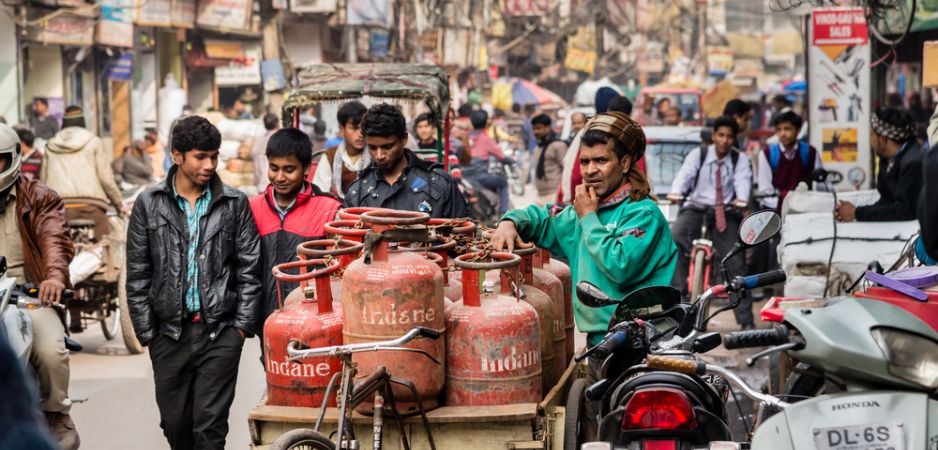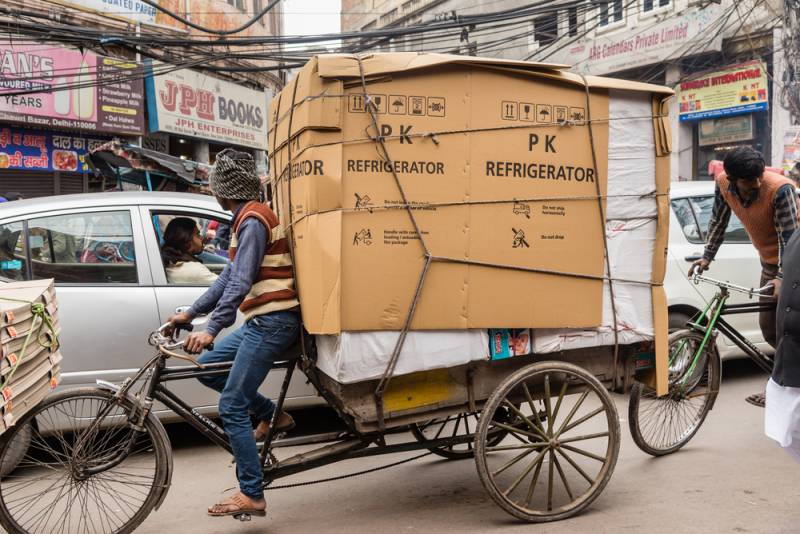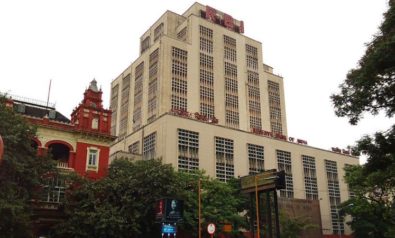In this edition of The Interview, Fair Observer talks to Sunil Asnani, a portfolio manager at Matthews Asia.
Ever since Indian Prime Minister Narendra Modi entered office in 2014, a positive reversal of the economy was expected. India’s economic situation deteriorated under the previous government, and the United Progressive Alliance was punished with a loss in last year’s election.
While India’s economy was shielded through the financial crisis due to a growing middle-class, low exports and a conservative banking sector, the country did see a fall in gross domestic product (GDP). Troubles grew for the previous government as India’s consumer prices—a measure of inflation—rose at around 10% annually as subsidies were high and rural wages grew at 15% over five years by 2013, outstripping productivity growth. GDP growth was stifled as a result and the poor were greatly affected.
Currently, India’s economy is heralded as a shining beacon among the emerging market economies, as the International Monetary Fund (IMF) recently updated the country’s GDP growth rate forecast to 7.5% for 2016. The 2015 budget has promised marked improvements in capital expenditure to allow India to become a manufacturing hub. A cut in corporate tax to 25% over the next four years, along with measures to combat corruption and black money, should galvanize investor confidence.
However, the pressure has grown on the government to deliver on the reforms promised, as investors such as Jim Rodgers have chided the Indian administration for its inability to swiftly enact policies. Time is running out for the government to take serious steps to improve the economy that will reward investors for their belief.
In this edition of The Interview, Fair Observer talks to Sunil Asnani, a portfolio manager at Matthews Asia, about India’s economic potential with and without reforms.
Daniel Currie: What do you think are the drivers for the Indian economy going forward?
Sunil Asnani: Reforms that encouraged liberalization in the early 1990s allowed consumers to reap the benefits from increased choice, which accelerated growth. While reforms took place on the output capabilities of the economy, more work needs to be done on the factors of production: land, labor, capital, along with businesses efficiency. With reforms taking place on the factors of production, India will witness increased efficiency and accelerated growth.
As reforms liberalize India’s factors of production, Indians will see better productivity within these sectors. This will lead to a decline in inflation that will allow for more investment in the future.
Currie: By “reforms,” would you say that the government needs to work on cutting down bureaucracy (red tape) or introduce other supply side measures?
Asnani: By reforms, I mean both policies and their execution. For example, the lack of infrastructure makes it difficult for farmers to get crops to the market. The result is an increase in the prices of crops for consumers as the extra time and distance of travel for the farmers cause 20-30% of fruits and vegetables to perish, and only 6% of the perishable foods are processed.
Farmers also face difficulties on the pricing front as they have to sell a part of their produce through regulated marketplaces, which does not allow for grade-based pricing. This is a disincentive for farmers to grow better quality crops.
The sheer number of middlemen between the farmer and the market causes mispricing and hoarding. To change all of this, one has to affect the right policies and enable investments in infrastructure. It is more than just “red tape,” as it depends on the type of policy enacted as well as its execution.
Currie: Analysts from major banks have cited a lack of short-term structural reforms, which could include subsidies among other things. Did you find the 2015 Union Budget of India lacking in any sort of specific reform? If so, how is it that Prime Minister Narendra Modi did not seem to get Finance Minister Arun Jaitley to form a more aggressive budget?
Asnani: Prime Minister Modi has to get support from his own coalition, as well as from other parties in order to attain desired results. After Modi’s party, the BJP [Bharatiya Janata Party], lost the Delhi Legislative Assembly election in 2015, the party might draw wrong lessons and resort to populism—some signs were visible in the recent budget. The BJP-led coalition does not have a majority in the Upper House of the parliament of India in order to get many important reform bills passed.
To reinforce its future, the BJP coalition has to win political support in state legislatures, which would eventually feed into more support in the Upper House. The party might be in a “catch 22” situation as it would have to win elections, which might tempt them to be less reform centric in the short-term so as to be able to make critical reforms in the long-term.
Currie: It has been a turbulent year with the US Federal Reserve and Bank of England thinking of increasing interest rates, along with Russia’s and the eurozone’s struggles. What are the greatest risks for Indian equities as well as the Indian economy?
Asnani: Concerning the short-term horizon, there will be risks stemming from the inevitable rise in US interest rates. Money will flow away from certain markets in India, and this could cause a few problems for Indian equities.
However, the real risk comes from the companies’ changing fundamentals. If the company is able to maintain an advantage over its competitors as well as generate stable profits and cash flow, then the firm should not be at risk. Companies dependent on policy measures—passed by the government—will be considered risky in this environment.
Over the long-term, India is less dependent on the rest of the world for its growth. Structural reforms will take time, and India has shown that it can grow without reforms, though there can be accelerated growth in the long-run if the government is able to implement key reforms.
The real risk in the long-run comes from lack of reforms, as it will lead to slower growth and lower productivity; this may sustain high inflation in the future.
 Currie: Is there anything you would advise Finance Minister Arun Jaitley or Prime Minister Modi on encouraging diversification along with sustainable Indian economic growth?
Currie: Is there anything you would advise Finance Minister Arun Jaitley or Prime Minister Modi on encouraging diversification along with sustainable Indian economic growth?
Asnani: India is already diversified; the country is probably one of the more diversified economies to choose from. There is a misconception that India relies heavily on the information technology sector; however, if you look closely, it does not amount to as much as you would think (around 6-7% of GDP).
Currie: The government announced the “make in India” program, which is to make the country a global manufacturing hub. Should the government try to aggressively pursue the “make in India” program? Is it not the time for India to stick to de-industrialization? If not, should the country refine the program in any way?
Asnani: India’s GDP is heavily skewed toward services. In order to provide some perspective, you must think about the information technology services sector. It is an important sector as the salary per person tends to be high, but it only employs a tiny fraction of the workforce—lower than 1% of the population.
The “make in India” program could galvanize manufacturing in India, as well as provide more jobs than some areas of the services sector such as IT.
A couple of important suggestions to the program include environmental sustainability and social security. As for the latter, it is apparent that there will be slack labor laws. The government must focus on making sure that workers are not subject to harsh treatment in any work environment.
My personal view is that the “make in India” program is not a bad idea.
Currie: What is India’s comparative advantage that makes it stand out from other emerging markets?
Asnani: From an investor’s perspective, I can say that India is a resilient economy that is able to cope with difficult times. The three factors that differentiate the Indian economy include diversity, demographics and entrepreneurship.
India can count on its diversity because the country does not heavily rely on one sector for growth. The variety of strong sectors will allow for India to generate sustainable growth in the future.
The abundance of young people entering the job market provides the private and public sector with a strong workforce to drive India’s economic engine. Finally, as India’s population is increasingly embracing entrepreneurship as people are choosing to leave their paid jobs to start their own firms, that can inject innovation to attain higher levels of economic growth.
Currie: What are your thoughts about India at the moment? Are you optimistic about the way reforms are enacted? Or are you comfortable with a “wait and see” strategy to see if reforms are achieved?
Asnani: I take a realistic view on India. There are many investors who swing between excessive optimism and extreme pessimism. I am confident that the government should be able to make executive reforms, which pertain to making government efficient, accountable and business-friendly. However, making legislative reforms might not be easy considering the political support enjoyed by the current government.
Asnani: I look at companies that are “masters of their own destiny,” as I want to know that managers are able to lead their companies through the good and bad times in the economy. Any firm that relies on political policies and reforms as a way to grow provides a risk.
Currie: What do you look for specifically in Indian companies, especially in this environment? Are there specific multiples or cash flow that piques your interest?
The company must also be able to attain a sustainable return given the cost of capital, but the management team must showcase entrepreneurship as well as honest stewardship. I believe that good stewardship, along with good business practices, can protect investors from downsides in the company’s returns.
Currie: If reforms are enacted effectively, then India should grow over the upcoming years. At the present time, how does your approach in choosing stocks vary with the economic environment? Is it a time for defensives or cyclicals?
Asnani: I look for good companies with strong fundamentals that can survive through the good and bad times; Matthews Asia’s India strategy has a well-diversified portfolio.
Currie: The government has pledged a number of road developments and rail improvements. Do you see those sectors as good investments for the future, or is there another sector that looks good?
Asnani: There needs to be evidence that top-line growth translates to bottom-line growth over a period of time. I look for certain measures such as good net profit, capital investment, management along with a return on investment [ROI]. The ROI measure allows companies to understand the efficiency gains of their investments.
I noticed that many companies overbid for projects in many sectors and the result is lower cash and profits in the end. Road and rail developments are competitive markets, which result in lower prices over a period of time. Firms should look to diversify themselves so as to not compete only on price. Otherwise companies will not secure sustainable competitive advantage and will succumb to lower profits through intensified price competition.
Currie: The Reserve Bank of India recently cut interest rates by 25 basis points to 7.25% in June. Is there a particular sector that will reap the benefits of rate drops?
Asnani: Many sectors will stand to benefit from rate cuts such as real estate and durable goods (cars). Debt-ridden companies will also benefit as they will have to pay lower rates. However, minority shareholders may not necessarily benefit as many of these companies may not have pricing power to cope with the increased competition. Since the Reserve Bank of India has already indicated that rate cuts may be on its way, the market may have already priced it in. This means they have made the necessary trades to lower their risks making it hard to “split hairs” at this level.
Currie: India has been attaining a lot of foreign investment in fiscal year 2015. Does the influx of foreign institutional investment and portfolio flows make India a volatile market in the future?
Asnani: India’s market is volatile. At this time, about 20% of the stock market is currently owned by foreign investors because of the large sums of money that are invested in Indian companies. High volatility should be expected from the volume of foreign investment.
Investors who want to put their money in India need to embrace volatility. The best thing is to find good companies with strong fundamentals. If it is a turbulent time in the market, then the investor can buy the strong company on the dips at a lower price.
The views expressed in this article are the author’s own and do not necessarily reflect Fair Observer’s editorial policy.
Photo Credit: Cornfield / Shutterstock.com
We bring you perspectives from around the world. Help us to inform and educate. Your donation is tax-deductible. Join over 400 people to become a donor or you could choose to be a sponsor.
inform and educate. Your donation is tax-deductible. Join over 400 people to become a donor or you could choose to be a sponsor.
Support Fair Observer
We rely on your support for our independence, diversity and quality.
For more than 10 years, Fair Observer has been free, fair and independent. No billionaire owns us, no advertisers control us. We are a reader-supported nonprofit. Unlike many other publications, we keep our content free for readers regardless of where they live or whether they can afford to pay. We have no paywalls and no ads.
In the post-truth era of fake news, echo chambers and filter bubbles, we publish a plurality of perspectives from around the world. Anyone can publish with us, but everyone goes through a rigorous editorial process. So, you get fact-checked, well-reasoned content instead of noise.
We publish 2,500+ voices from 90+ countries. We also conduct education and training programs
on subjects ranging from digital media and journalism to writing and critical thinking. This
doesn’t come cheap. Servers, editors, trainers and web developers cost
money.
Please consider supporting us on a regular basis as a recurring donor or a
sustaining member.
Will you support FO’s journalism?
We rely on your support for our independence, diversity and quality.

















Comment